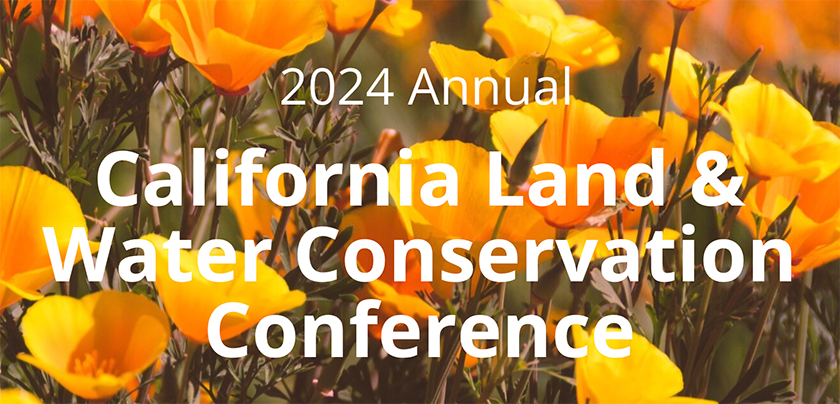In March, TomKat Ranch Educational Foundation co-presented at the California Council of Land Trusts annual conference with Point Blue Conservation Science, The San Mateo Resource Conservation District, and the Natural Resource Conservation Service.
Presenting at the California Council of Land Trusts Annual Conference
04/22/2024
By: Kevin Watt, Hayley Strohm, and Bonnie Eyestone (Point Blue)
In March, TomKat Ranch Educational Foundation (TKREF) co-presented at the California Council of Land Trusts (CCLT) annual conference with Point Blue Conservation Science (Point Blue), The San Mateo Resource Conservation District (SMRCD), and the Natural Resource Conservation Service (NRCS).
CCLT has been a wonderful ally in TKREF’s work to scale regenerative agriculture in California. TKREF’s Director, Wendy Millet, serves on their board and has worked for years to share the message that land trusts are an essential part of preserving California’s vibrant biodiversity and agricultural heritage. For decades, land trusts have been leaders in the protection of California’s natural and working lands, and, excitingly, many are now also inspirational leaders in the regenerative stewardship of those lands.
In our collaborative co-presentation, we focused on regenerative agriculture as an effective and scalable tool for preserving and enhancing the health of California’s protected lands. The talk highlighted the power of partnership and the ways each organization implements the principles and practices of regenerative agriculture. The speakers shared how regenerative agriculture can support the work of conservation organizations: through sharing tools and resources and studying collaborative successes between land managers, conservation groups, non-profit organizations, and public agencies.
The talk was very well received. More and more land trusts are recognizing that regenerative stewardship of land is necessary to the missions and goals of their organization, the communities they serve, the municipalities they neighbor, and the climate objectives of California.
There was much curiosity about implementing regenerative principles and the effects that this approach has on the water and air quality of the regions that surround protected lands. Many land trusts are already involved (or interested in partnering with) Point Blue to monitor these landscapes to ensure better ecological health and resiliency. We look forward to seeing what unfolds as we continue to engage with the land trust community.
